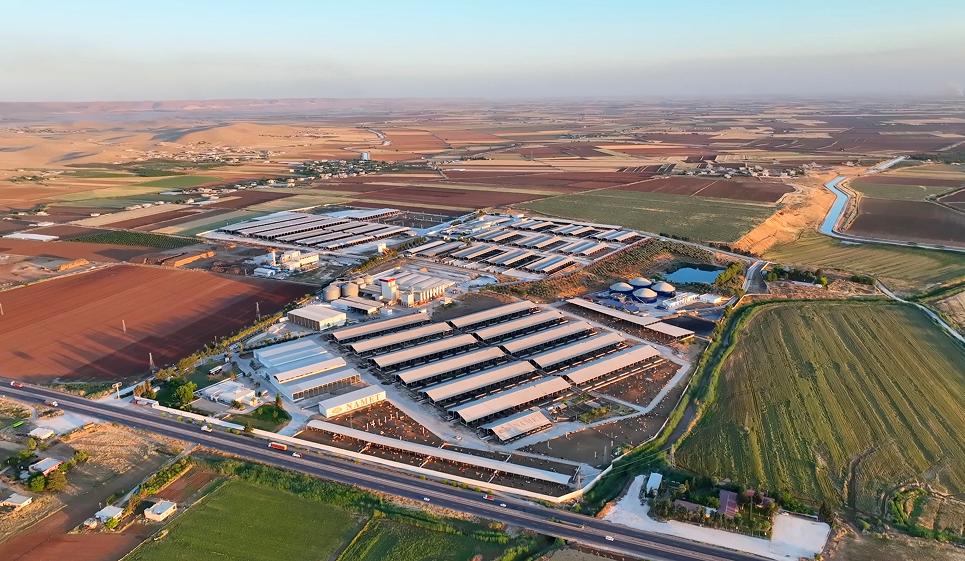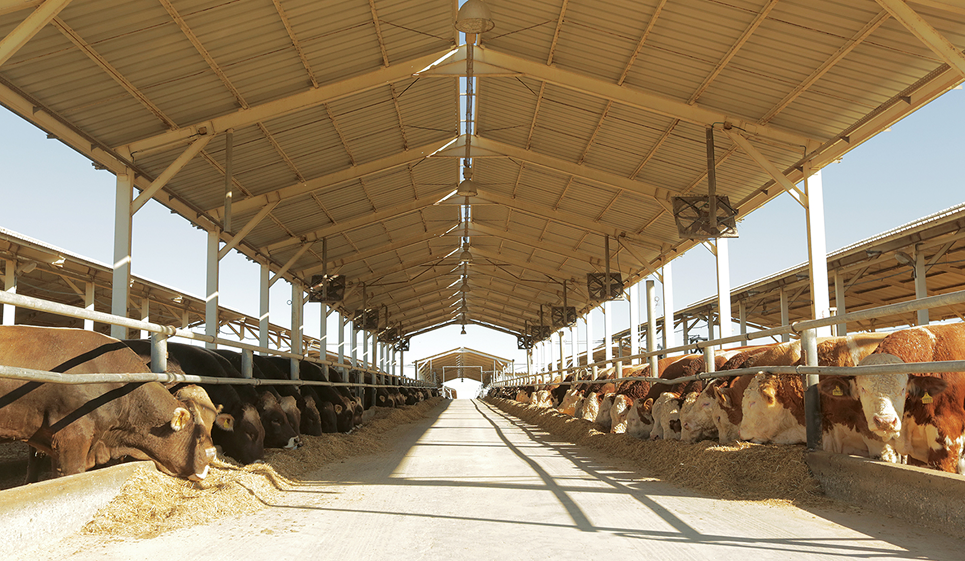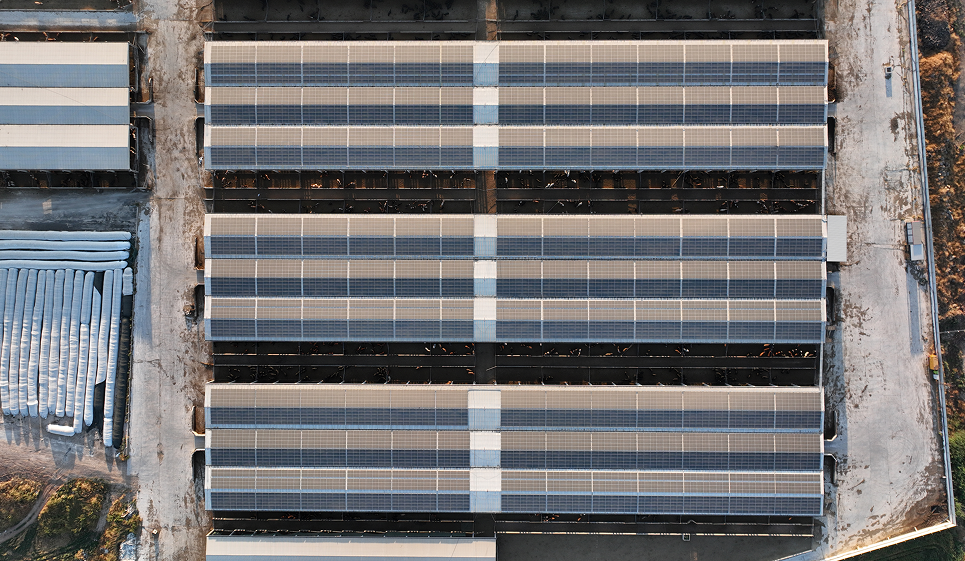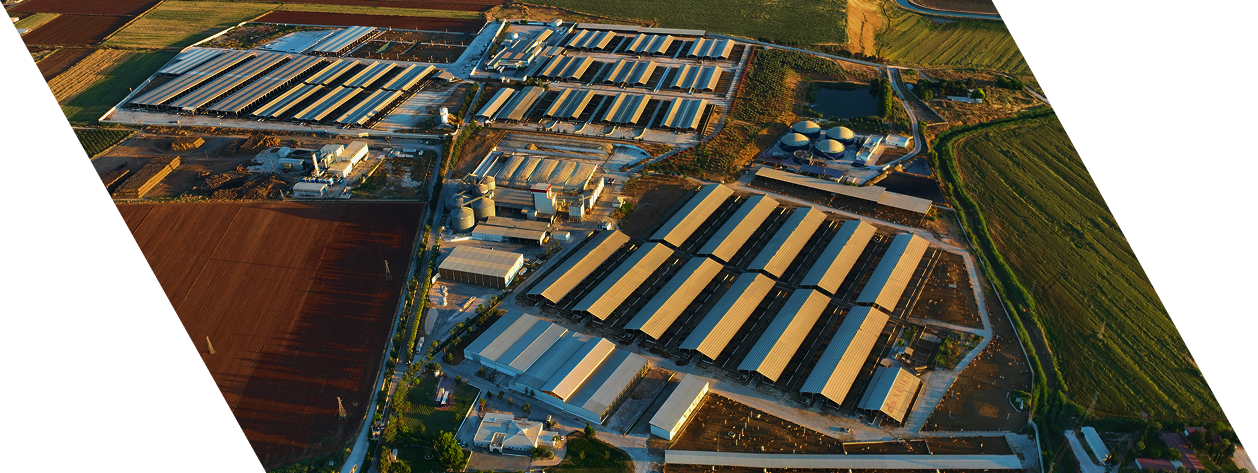
Çiftlikten Çatala
Lezzet Yolculuğu
2013 yılından bu yana Namet bünyesinde faaliyet gösteren Şanlıurfa Entegre Besi ve Et Tesisi, 751.260 m²'lik açık alan üzerine kuruludur. Besi çiftliğinin bulundurabilirlik kapasitesi 76.500 büyükbaş hayvandır.
Türkiye’nin en büyük büyükbaş besi çiftliklerinden birisi olan Şanlıurfa Entegre Besi ve Et Tesisi, Namet ürünlerinin lezzet kaynağıdır.

Hayvan Refahında
Örnek Çiftlik
Dünyada ve ülkemizde bulunan hayvan ırklarının en verimlileri, Namet çiftliğinde besiye alınmakta ve yetiştirilmektedir. Besiye alınan hayvanların yemleri, çiftliğimizin bünyesinde bulunan yem fabrikamızda doğal yöntemlerle hazırlanarak, uzman Ziraat Mühendisleri tarafından beslenme programına alınmaktadır.
Veteriner hekimlerin kontrolünde, İslami şartlara uygun olarak uzman eğitimli kasaplar tarafından gerçekleştirilen kesimlerin ardından karkas etler, işlenmek üzere frigorifik araçlarla üretim tesislerimize ulaştırılmaktadır.

Sürdürülebilirlik
Sürdürülebilir bir gelecek için yeşil enerjiyi tüm tesislerinde uygulamak isteyen Namet, Kasım 2023’te devreye aldığı 4 MWp kapasiteli GES (Güneş Enerjisi Santrali) yatırımı ile çiftliğin yıllık elektrik enerjisi ihtiyacından daha fazlasını güneşten sağlamaktadır.
GES yatırımına ek olarak, çiftliğimizdeki gübre ve diğer organik atıklar, yine çiftlik içerisindeki Biyogaz Tesisi’nde işlenerek elektrik enerjisine dönüştürülmektedir.

